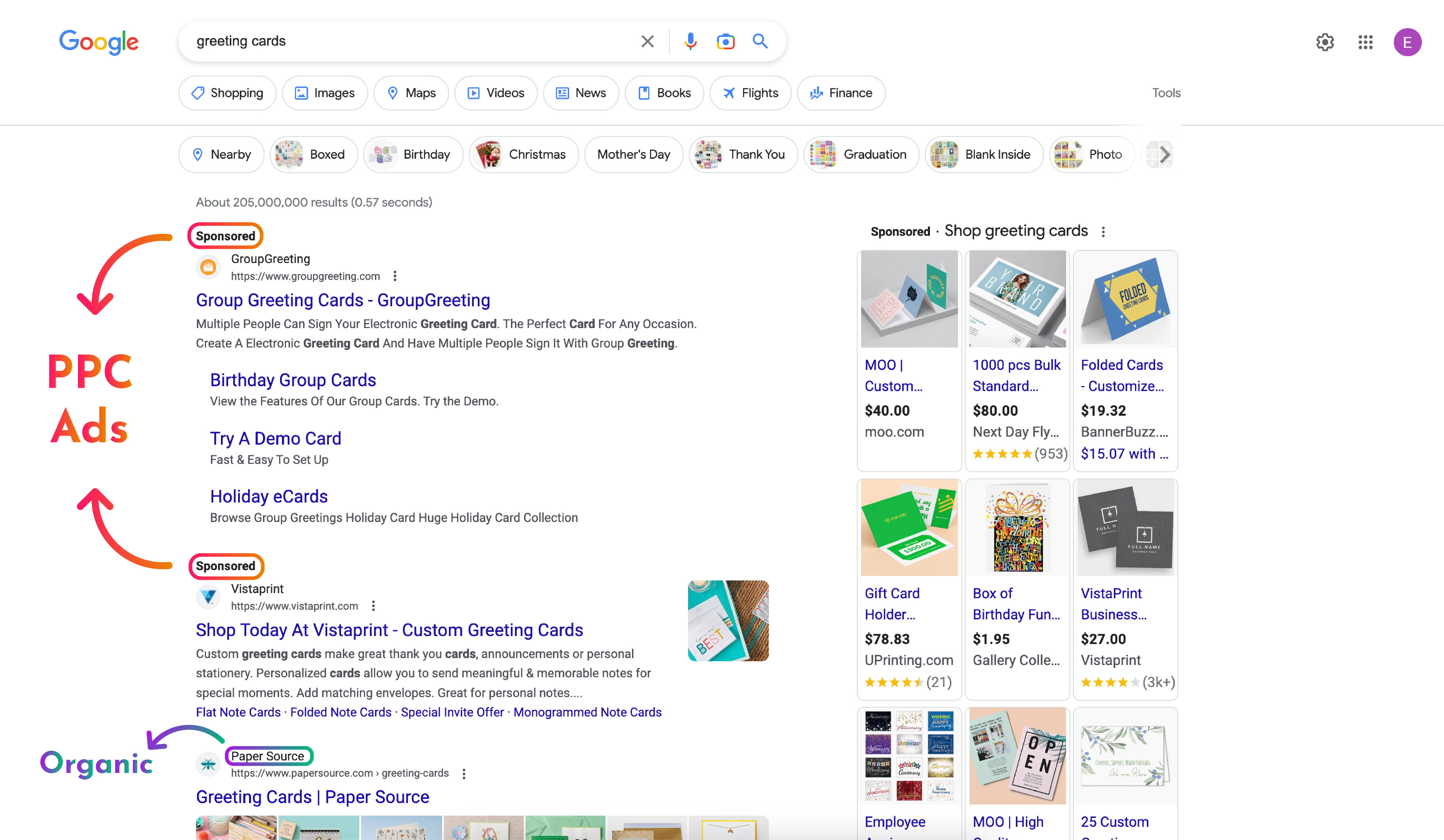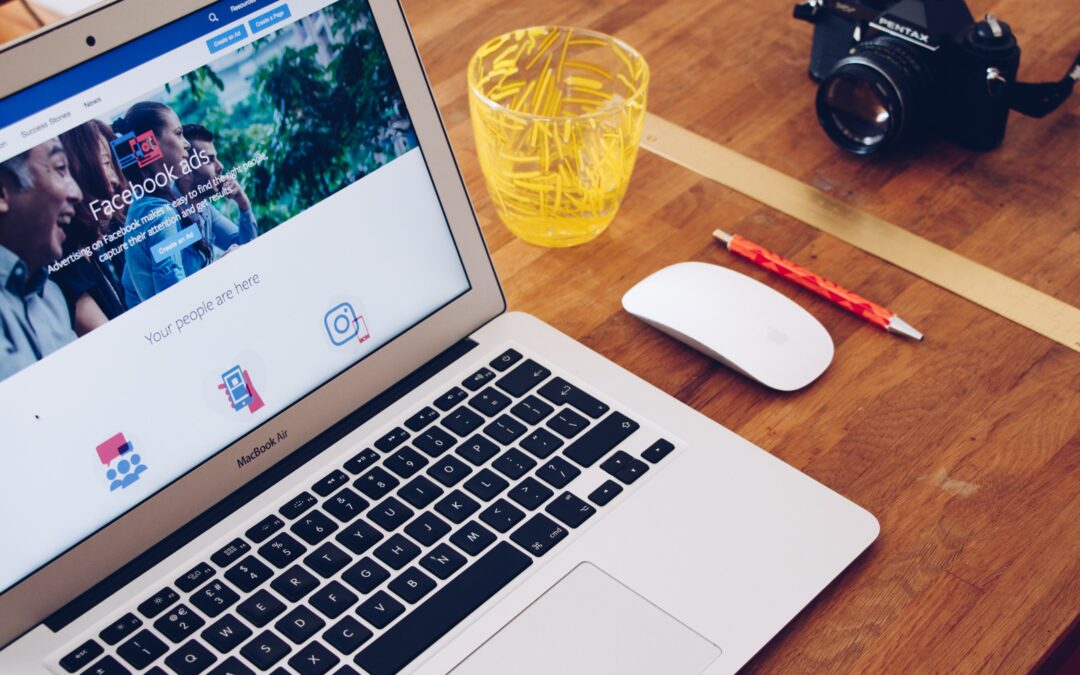What are PPC and Social Media Ads?
If you’re a business owner looking to expand your audience and quickly attract more leads, you should consider pay-per-click (PPC) or social media advertising. Regular content on social media can still lead to traffic, but advertising is the faster option.
Social media ads and PPC ads are both forms of paid digital advertising, but they operate in slightly different ways.
Social media ads appear on social media platforms such as Facebook, Youtube, Twitter, Instagram, Pinterest, TikTok, and LinkedIn. These ads typically appear in users’ newsfeeds, on the sidebar of the website, and can even be found in your messenger inbox. They can be targeted to specific audiences based on a range of demographic and interest-based factors.
Pay-per-click ads on the other hand are advertisements that appear on search engine results pages (SERPs) or on other websites. Advertisers only pay for these ads when a user clicks on them. PPC ads can also be targeted to specific audiences based on keyword searches or other factors.
One key difference between social media ads and PPC ads is their placement. Social media ads are primarily displayed on social media platforms, while PPC ads are typically found on search engine results pages or other websites.
Pricing
Another difference is the cost structure. Social media ads are typically priced on a cost-per-impression (CPM) basis, meaning that advertisers pay a set fee for every 1,000 times the ad is displayed. PPC ads, as the name suggests, are priced on a cost-per-click (CPC) basis, meaning that advertisers only pay when someone clicks on their ad.
Return on investment for PPC advertising varies. The factors with the most influence on effectiveness include: platform used, demographic information incorporated, ad format, budget, industry, and level of competition for the target audience.
The average ROI is 200-300% which translates to $2-3 for every dollar spent. Some companies see much higher returns than this, but some companies see slightly lower yields. For example, Google boasts that for every dollar spent with them you’ll receive $8 in return even though this is extremely high.
Return on investment for social media advertising is greatly varied. The factors with the most influence on effectiveness include: social media platform, targeting options, ad format, budget, and level of competition within the industry.
However, most researchers and surveys agree that low-end ROI is only 20-40% for social media ads whereas high-end ROI is 120-200% no matter the industry or level of expertise.
Glass Ivy will use data-driven research and audience evaluation to come up with the best advertising strategy for your business.

Methods we use to successfully run both PPC and social media advertisements:
Targeted Advertising:
PPC ads allow businesses to target their advertising to specific keywords, geographic locations, demographics, and even times of the day. This way, the ad is only shown to people who are more likely interested in the product or service being offered. This makes advertising more effective and efficient.
Social ads allow you to target a specific audience to include job titles and interests, but they also let you retarget to see what is and isn’t working.
Increased Visibility:
Paid advertising can help businesses increase their visibility in search engine results pages (SERPs) and other online platforms. This is especially important for new or small businesses that may not have a large online presence or brand awareness.
If you can grow your online visibility, that can lead to higher website traffic, greater brand awareness, increased credibility and trust, and improve your overall SEO. All of these factor into generating more leads and bringing in more customers.
Paid ads are the results seen before and to the right of organic results in search engines.
Measurable Results:
Businesses can track and measure the results of their advertising efforts in real-time with paid ads.
This means they can quickly and easily identify which campaigns are generating the most clicks and conversions, and adjust their advertising strategies accordingly.
Quick Results:
These advertising strategies help generate quick results. If you follow these tips, your business can achieve its advertising goals in a short period of time.
This is especially important for businesses that need to drive traffic and generate leads or sales quickly.

Here are the basic steps to set up and run a PPC campaign:
- Choose a PPC Platform: First, choose a platform to advertise on. The most popular platforms include Google Ads, and Bing Ads.
- Create an Ad Campaign: Once you choose a platform, you need to create a campaign for your ad. This involves creating ad groups, choosing keywords, writing ad copy, setting your demographics, and setting a budget for the campaign.
- Set cost structure and budget: Next, you’ll need to set costs for your chosen keywords. Cost structure, also called bids, determines how much you’re willing to pay for each click on your ad.
- Launch the Campaign: Once the campaign is set up and the bids are set, you can launch the campaign. Your ad will now be displayed to those who search for the keywords you’ve chosen, and you’ll pay each time someone clicks on your ad.
- Monitor and Optimize the Campaign: It’s important to monitor the performance of the campaign and make adjustments as needed. You may have to adjust bids, refine keywords, or test different ad copy.
- Pay for Clicks: As people click on your ads, you’ll be charged for each click, based on the bid you set for the keyword.
Hubspot goes into more detail about PPC advertising in this article.
Here’s how social media ads typically work:
- Choose a Platform: First, pick the platform that you want to advertise on. Each platform has its own advertising system and ad formats, so choose one that aligns with your advertising goals.
- Set Up a Campaign: Next, set up a campaign for your ad. This involves choosing the ad format (such as image, video, or carousel), defining your target audience, setting a budget and cost structure, defining the target audience, and creating the ad itself.
- Choose the ad format that aligns with your campaign objective and target audience. Common ad formats include images, videos, carousels, and sponsored posts. Decide what kind of design, copy, and call to action fits best for your brand. These need to be visually appealing to your audience. Make sure you also have an appropriate landing page for your ad.
- Launch the Ad: Once the campaign is set up and the ad is created, you’re ready to launch! The ad will be displayed to people who match the targeting criteria that you chose.
- Monitor and Optimize the Ad: After the ad is launched, monitor its performance and optimize it as needed. You may have to adjust its targeting criteria, refine the ad copy or creative, or change the bid amount.
- Pay for Impressions or Clicks: Social media ads are typically priced on a cost-per-impression (CPM) or cost-per-click (CPC) basis. Choose the pricing model that works best for your advertising goals and budget.
Hootsuite says as organic reach is harder to achieve nowadays, so social media advertising is becoming more popular.
Glass Ivy is Here to Help
Overall, the goal of a PPC campaign is to attract qualified traffic to your website or landing page and generate leads or sales for your business. By following the steps above and considering the benefits of these ads, you’ll be able to build that trust and brand awareness. This will lead to increased website traffic and overall visibility for your company.
PPC and social media ads can be a cost-effective way to promote your business online. Glass Ivy specializes in both forms of advertising, Let us help launch your campaign and monitor its success.

